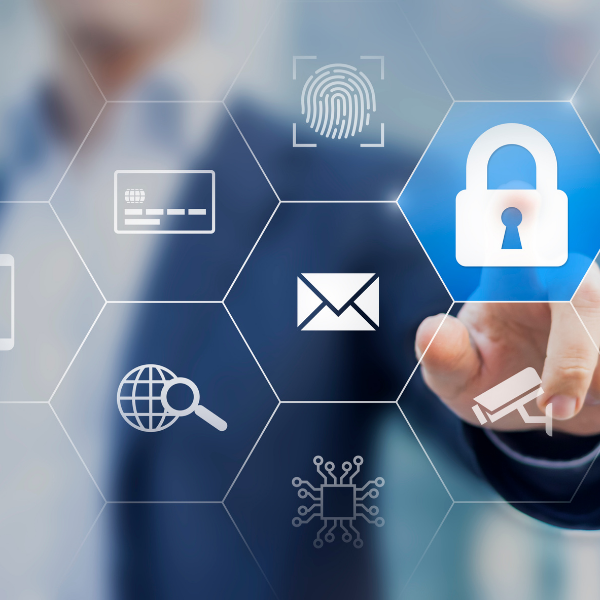Introduction:
Developing cybersecurity is essential to safeguarding digital assets from online attacks. Organizations are depending more and more on digital technology for information processing, transmission, and storage, thus protecting these resources from bad actors is crucial. Here, we examine how cybersecurity safeguards in development maintain the availability, integrity, and confidentiality of data while safeguarding digital assets.
Protection Against Malware:
Digital assets are seriously threatened by malware, which includes viruses, worms, Trojan horses, and ransomware. By identifying and preventing harmful software from invading networks, cybersecurity tools including intrusion detection systems, firewalls, and antivirus software assist defend against malware attacks.

Data Encryption:

An essential cybersecurity technique, encryption shields digital assets by encoding private data into a format that can only be decrypted using the right key. This contributes to maintaining data integrity and secrecy, particularly when data is transferred across networks or kept in the cloud.
Secure Authentication:
To confirm the identity of people gaining access to digital assets, secure authentication techniques including passwords, biometrics, and multi-factor authentication are used. This guarantees that only people with permission can access sensitive data, preventing unwanted access.
Software Updates and Patch Management:
To safeguard digital assets against known vulnerabilities, software updates and patch management are crucial. Software updates are made with cybersecurity in mind, and vulnerabilities are quickly fixed to lower the likelihood that attackers would take use of them.
Secure Network Architecture:
By restricting access to sensitive information and preventing unwanted users from entering, the implementation of a secure network architecture—which includes segmentation, virtual private networks (VPNs), and secure access controls—helps protect digital assets.
Employee Education and Awareness:
Training programs can assist in educating staff members on the significance of cybersecurity best practices, as they play a critical part in cybersecurity. This entails being aware of phishing attempts, creating secure passwords, and realizing the dangers of disclosing private information.
Incident Response Planning:
To promptly detect, address, and mitigate cybersecurity events, an incident response strategy must be created. By doing this, attacks are lessened and digital assets are shielded from potential dangers in the future.
Regulation Compliance:
Organizations can meet minimum security requirements and safeguard digital assets from legal and regulatory risks by adhering to cybersecurity regulations and standards, such as the Payment Card Industry Data Security Standard (PCI DSS) and the General Data Protection Regulation (GDPR).
Data Loss Prevention (DLP):
By tracking, identifying, and stopping the unlawful transfer or disclosure of private data, data loss prevention solutions assist in safeguarding digital assets. Data breaches can be decreased by using DLP systems to enforce policies that limit the use of USB devices, cloud storage, and email attachments.
Secure Coding principles:
By putting secure coding principles into practice throughout software development, vulnerabilities that an attacker could exploit are decreased. This covers methods like secure error handling, input validation, and avoiding the usage of outdated or unreliable routines.

Secure Cloud Computing:
Although cloud computing has numerous advantages, there are security issues as well. Secure cloud computing procedures assist guard against data breaches and illegal access to digital assets kept in the cloud. These procedures include encryption, access controls, and frequent security audits.
Endpoint Security:
To guard against malware and other cyber threats, endpoint security solutions—like antivirus software, endpoint detection and response (EDR) systems, and mobile device management (MDM) programs—are installed on PCs, smartphones, and tablets.
Secure Development Lifecycle (SDLC):
By incorporating security into the SDLC, it is possible to guarantee that security issues are taken into account at every level of the development process. This include carrying out code reviews, security assessments, and secure coding techniques.
Vulnerability management:
Preventing hackers from taking advantage of digital assets is achieved by routinely checking and fixing vulnerabilities in software and systems. The process of vulnerability management is locating, ranking, and fixing security flaws in order to lower the likelihood of cyberattacks.
Constant Monitoring:
Real-time detection and response to security incidents are facilitated by the constant observation of network activities and digital assets. This entails keeping an eye out for questionable activities, examining traffic patterns and records, and putting security information and event management (SIEM) systems into place.
Network Security:
By monitoring and managing network traffic to stop illegal access and data breaches, network security solutions like firewalls, intrusion detection and prevention systems (IDPS), and secure networking protocols help protect digital assets.
Secure Configuration Management:
To reduce the risk of vulnerabilities and unauthorized access, secure configuration management entails making sure that devices and systems are set securely. This include setting up secure passwords, turning off unused services, and routinely upgrading firmware and software.
Security Awareness Training:
This type of training helps inform staff members about typical cyberthreats, like social engineering and phishing scams, and teaches them how to identify and handle these dangers. This can lessen the possibility that security lapses will result from human error.

Security Awareness Training:
This type of training helps inform staff members about typical cyberthreats, like social engineering and phishing scams, and teaches them how to identify and handle these dangers. This can lessen the possibility that security lapses will result from human error.
Secure Supply Chain Management:
This type of supply chain management focuses on identifying and reducing security threats from suppliers and third-party providers. This entails carrying out security evaluations, setting up safe routes of communication, and keeping an eye out for unusual activity.
Incident Response and Recovery:
Organizations may reduce the damage that cybersecurity incidents cause to digital assets by creating and executing an incident response plan that will help them respond to occurrences efficiently. As part of this, the incident must be contained, the source must be looked into, and regular activities must be resumed.
Safe Remote Access:
As remote work becomes more common, safe remote access tools like multi-factor authentication (MFA) and virtual private networks (VPNs) assist safeguard digital assets accessible from far-off places by making sure that only authorized users have access to critical data.
Data Backup and Recovery:
Creating a data recovery plan and routinely backing up digital assets will help guarantee that data can be recovered in the case of a natural disaster, cyberattack, or other data loss incident. This reduces data loss and downtime.
Security Policy and Governance:
Creating and upholding security policies and governance structures aids in guaranteeing that cybersecurity precautions are applied uniformly throughout a company. This include establishing security standards, outlining roles and duties, and carrying out routine audits and evaluations.
Threat Intelligence and Information Sharing:
By keeping an eye on risks and trends in the cyberspace, companies can stay informed through the sharing and monitoring of threat intelligence. By proactively putting security measures in place, this knowledge can assist firms in better protecting their digital assets.
Conclusion:
The implementation of many techniques and technologies is part of the multidimensional approach of cybersecurity in development, which aims to safeguard digital assets from cyber threats. To effectively safeguard their digital assets, organizations need to take a comprehensive approach to cybersecurity, from securing network infrastructure and endpoints to training staff on cybersecurity best practices.
Organizations may guarantee that security aspects are taken into account at every level, from planning and design to implementation and maintenance, by incorporating cybersecurity into the development process. By taking a proactive stance, the likelihood of cyberattacks and data breaches is reduced, safeguarding the availability, confidentiality, and integrity of digital assets.
- All Posts
- Uncategorized

Dr. Daniel Davidson, MD, MBA Introduction: The goal of success for businesses nowadays is to establish a global brand because…

Dr. Daniel Davidson, MD, MBA Introduction: Stem cells have captivated the imagination of scientists and the public alike for their…

Dr. Daniel Davidson, MD, MBA Introduction: Platelet-rich plasma (PRP), fat grafting, and dermal fillers made from natural sources are examples…
